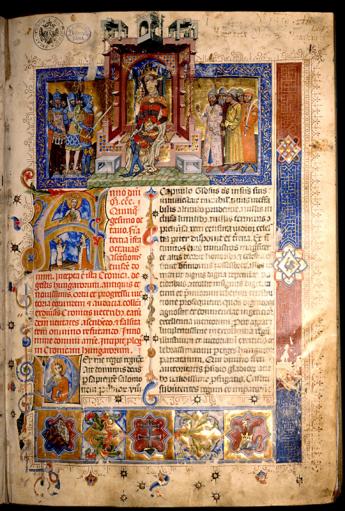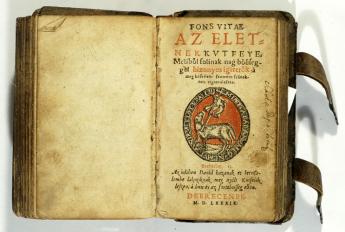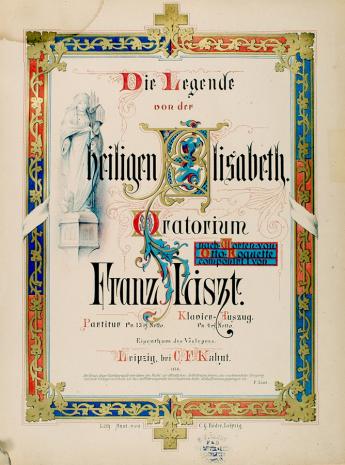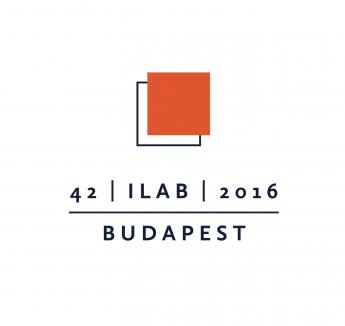Magyar Antikváriusok Egyesülete Bosze Adam Zenei Antikvarium / Adam Bosze Music Antiquarian
BUDAPEST 2016 - ILAB CONGRESS & INTERNATIONAL ANTIQUARIAN BOOK FAIR
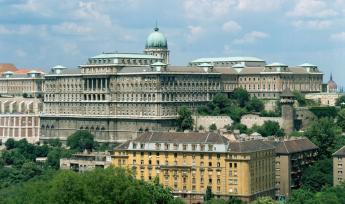
For the first time ever the Hungarian rare book dealers invite colleagues and collectors from across the world to Budapest. The 42nd ILAB Congress and 26th ILAB International Antiquarian Book Fair from 21 to 25 September 2016 will present Budapest as one of the most beautiful cities and one of the most fascinating book capitals in Europe. The congress programme is as manifold as exciting and proves that Budapest is a city with many faces: the old Hungarian capital full of books and music, history and tradition and at the same time a lively and busy Eastern European centre full of young and amazing cultural concepts.
Have you already registered for the ILAB Congress and / or for the succeeding ILAB International Antiquarian Book Fair? Have a look at the promising programme and do not hesitate to subscribe.
In a series of articles we will introduce you to the most exciting places of Budapest – libraries, museums, archives, music halls and other famous sites. Joins us on our virtual tour through the Hungarian capital. Today we will invite you to a virtual tour through the:
Treasures of the National Library Széchenyi
Hungary’s National Széchényi Library was founded in 1802. It owes its establishment and name to a highly patriotic Hungarian aristocrat, Count Ferenc Széchényi. At the end of the 18th century, Széchényi started collecting Hungarian books in Hungary and abroad, brought them together into one single collection and donated this collection to the nation in 1802. The entire nation was mobilized by this patriotic deed. Many further donations were made. In 1808 the Diet (the National Assembly) set up the Hungarian National Museum to collect the historical, archeological and natural relics of Hungary and incorporated the Library Széchényi within this frame. This was the origin of the institution which, for approximately two centuries, was the common treasure house of written, printed and objective relics of the Hungarian past.
The Library Széchényi moved into the Classicist building of the Hungarian National Museum in 1846/1847, and it was not until 1949 that the Library was separated from the Museum and became once again an independent institution under its current name of National Széchényi Library. It was moved into its new and present headquarters in Buda Castle in 1985.
The National Széchényi Library collects publications and prints of any kind produced in Hungary, books published abroad in the Hungarian language, written by Hungarian authors, translated from Hungarian or related to Hungary, as well as manuscripts in Hungarian or related to Hungary. In addition to the material listed above, the Library also collects literature connected with other Finno-Ugrian people, since the Hungarian language belongs to this family of languages, and also literature related to the neighboring countries.
Manuscript Collection
The National Széchényi Library holds the largest manuscript collection of Hungary. Since the very beginnings, the Library has been collecting all the handwritten documents by private persons, with the exception of the history of modern science and technology. The number of documents stored in the National Széchényi Library’s Manuscripts Archive is approximately 1,400,000. The total number of surviving medieval manuscripts of Hungarian origin is relatively low. With its nearly 700 codices and 1,000 codex fragments, the Manuscripts Archive owes an outstanding collection: language relics, corvinas, and codices of Hungary’s most famous historical resources.
Furthermore, the Archive comprises as many as 30,000 volumes in various languages originating from mid-16th century up to the present day. The richness and value of this collection is priceless. It contains historical notes, theological works, poems and speeches, albums and catalogues of former libraries. The autograph collection of at least 30,000 letters date from 16th to the end of the 20th century, serving as a first-rate source for researchers of Hungarian history, literary and cultural history.
Early Printed Books
The Early Printed Books Collection has been built since mid-19th century and keeps the earliest printed documents of Hungary’s National Library. In 1865, incunabula were placed, as a separate collection, in the elegant and newly built Széchényi Room of the Hungarian National Museum which then served as a home for the National Széchényi Library. At the beginning of the 20th century, documents belonging to the so-called Old Hungarian Library were added: books and pamphlets published in Hungarian before 1711, printed in Hungary or publications written by a Hungarian author in a foreign language somewhere abroad. The third important part of the Early Printed Books Collection has been donated by Count Sándor Apponyi (1844-1925) to the National Széchényi Library.
The Collection holds over 1,800 incunabula, which means nearly 25 percent of Hungary’s total incunabulum stock (roughly 7,100 items). Among the outstanding treasures is a fragment from Gutenberg’s 42-line Bible together with the Decretum Gratiani printed by Peter Schöffer, an apprentice of Gutenberg, in 1472. Other gems are the Chronica Hungarorum, the first book printed in Hungary in 1473 by András Hess of Buda, and the Missale Glagoliticum published in 1494 in Zengg (Senj), being the most complete existing copy of the work. The Thuróczy-krónika (Thuróczy Chronicle) held in the National Széchényi Library may well be a copy made for King Matthias and Queen Beatrix. It is printed on parchment, illustrated with richly gold-plated and hand-painted miniatures; the chronicle was published in 1488 in Augsburg. And you will find traces of Dracula here: The only known copy of the first printed historical work about Dracula, the infamous count of Wallachia, is kept at the Széchényi Library.
Old Hungarian Library
Due to a generous donation in 1919 by a bibliophile couple, Gyula Todoreszku (1866-1919) and Aranka Horváth, the Old Hungarian Library is Hungary’s richest collection with more than 8,500 items, including the earliest printed texts in the Hungarian language, the Benedek Komjáthy’s translation of the Letters of Saint Paul, and the first book written in the Hungarian language and printed in Hungary, János Sylvester’s translation of the New Testament, published in 1541 in Sárvár-Újsziget. The Old Hungarian Library contains books, broadsides and prints from the Reformation and the Hungarian Baroque, editions of Gáspár Heltai, Péter Bornemissza, Sebestyén Tinódi, Péter Pázmány and Miklós Zrínyi, both academic and popular publications published until the Peace of Szatmár in 1711. There is also the first complete edition of the Bible in Hungarian, translated by Gáspár Károlyi and others and published in 1590 in Vizsoly.
Apponyi Collection
The National Széchényi Library owes its Hungarica Collection to Count Sándor Apponyi (1844-1925) who, in his last will formulated in 1924, donated his personal library. From his early youth, Count Apponyi had enthusiastically collected Hungary-related books in foreign languages. A son of a family of high-ranking diplomats, Apponyi spent decades in major cities of Europe, mainly in London and Paris. In the course of his long life, he collected publications with the diligence of a scholar. Count library comprised over 3,000 books and pamphlets by foreign authors, including a report in French on the Battle of Mohács, rich material on the 16th and 17th century wars against the Turks, on the Thököly Uprising and about the Rákóczi Fight for Freedom. Adjacent to the Apponyi Hungarica Collection is the Count’s well-known collection of woodcuts which, by way of depicting certain events of the Hungarian history, is a major source for historical research. This collection keeps the earliest printed map of Hungary, the Lazarus’ Map published in 1528 in Ingolstadt.
Maps
With over 300,000 items, the National Széchényi Library’s Map Collection holds a rich and highly valuable number of maps of the entire European history of cartography, most of all due to several generous donations. To mention just the most notable ones, there was the donation of Count István Illésházy (208 items, 1835); the acquisition of a several hundred-piece map collection of the renowned book and map collector Miklós Jankovich (1836); the purchase of a 300-piece collection of the famous professor of linguistics István Horváth; a highly valuable present of Enea Lanfranconi (circa 2,200 items, 1895).
Music Collection
Although the stock of the National Széchényi Library had contained music documents since its foundation, the idea of setting up a separate Music Collection came up only at the beginning of the 20th century. Following the purchase of Ferenc Erkel’s heritage, the so-called “Musica” division was formed within the Library’s Manuscripts Archive, and then, in February 1924, Chief Librarian Kálmán Isoz was assigned to organize an official Music Collection for Hungary’s National Library. The current collection comprises as many as 170,000 items of printed sheet music, while the number of manuscript sheet music items is approximately 18,000. In addition, the National Széchényi Library keeps a great number of manuscript- and printed sheet music in its repositories and an opera and stage music collection of the size of roughly 550 running meters of shelves, furthermore music-related photographs, books and manuscripts on the history and theory of music as well as several heritage collections of composers.
42nd ILAB Congress
26th International Antiquarian Book Fair
Budapest, Hungary
21 – 25 September 2016
We hope to see you there!
>> To register online and for more information please visit the official website.
>> For any further questions please contact the organizer at revhegyi@congressline.hu
(Pictures: Antiquarian Booksellers’ Association of Hungary, MAE, jjel)
